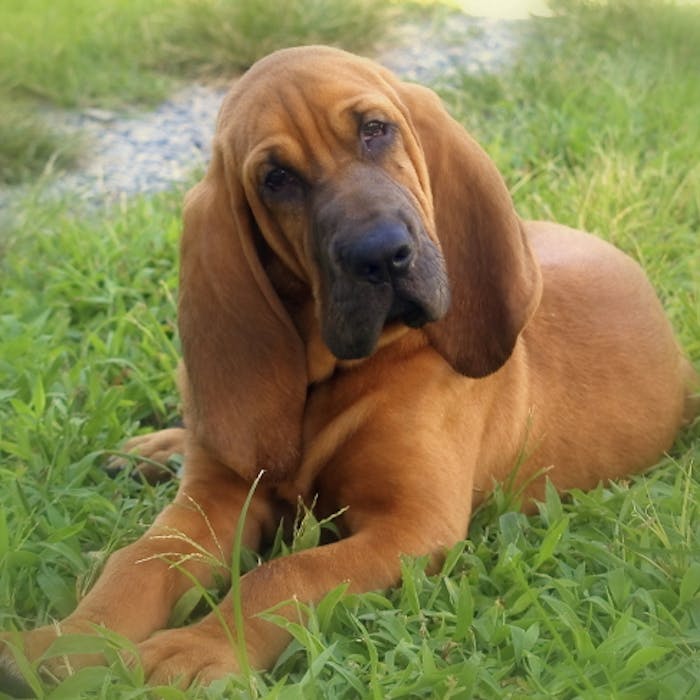
Bloodhound - ahead of the pack by a nose
The Bloodhound is an ancient breed, first taken to England from Normandy by William the Conqueror. It has the best nose of any hound and excels at tracking.
The name Bloodhound is not for being ‘blood thirsty’, but from being a hound of pure blood (pure in breeding).
They were bred from the Talbot Hound and the St Hubert Hound, but have been identified as the modern Bloodhound since the Middle Ages, and are considered a British native breed. They were originally used for stag hunting - following a wounded animal sometimes for amazingly long distances. From very early times they were also used in tracking humans. In Scotland the Bloodhound was known as the sleuth-hound, and was used up to about 1600 on both sides of the Scottish border in pursuit of raiders and cattle thieves.
The Bloodhound is first and foremost a scenting breed and will be persistent in following a trail, no matter for how long. It has been known for a Bloodhound to successfully follow a trail that was more than 72 hours ‘cold’. Consequently they have found work in law enforcement and in search and rescue up to the present day.
They are gentle-natured, affectionate dogs who do not like to be left alone. Their familiar characteristics are their long ears and an expression that is often perceived as “sad”, the Bloodhound is an iconic breed and has changed very little over the years that it’s been recognised in the UK by the Kennel Club. The wrinkles on the head are a distinguishing feature, and these are very important as they protect the eyes when the bloodhound has its nose to the ground and is tracking hard through scrub and undergrowth, where thorns and twigs could otherwise damage the eyes.
This is a very big dog and, sadly, rather short-lived compared to most breeds. The unsuitability of the breed to most modern lifestyles due to its size, exercise requirements, and lovable but awkward aspects of its character probably explains why it has become one of our most uncommon dog breeds.
Further reading
Links to external websites are not maintained by Bite Sized Britain. They are provided to give users access to additional information. Bite Sized Britain is not responsible for the content of these external websites.
